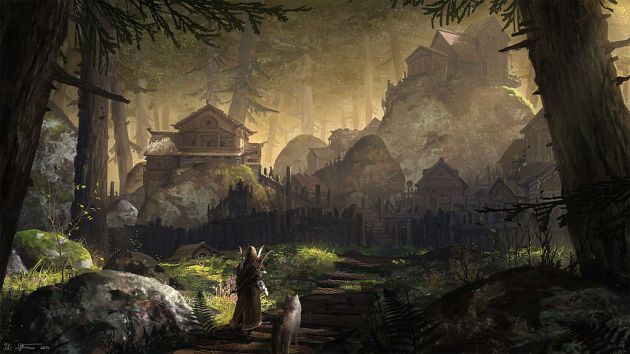Hamlet
A hamlet is a group of rural dwellings that are too small to be considered a village, but possess an organisation that places them above thorps. Different forms of the hamlet occurs in different hexes, with distinct coin, bread and hammer signifiers. Hamlets do vary in size, leadership, defense, personal freedom and facilities offered, while retaining the quality of a trifling importance and humble nature. Any hamlet-dweller would see village life as exciting, fast-paced and a little terrifying.
Hamlets may be divided into two general groups: those that occur in type-6 hexes and those that occur in type-5. Thereafter, the chief distinction is the amount of water power available (does the hamlet's hex include a river large enough to drive a water mill) or whether or not the hamlet is located upon the sea or a large lake. In the latter case, the hamlet's significance is affected by the influence of currency rather than possessing a barter economy.
Type-6 hamlets consist of the following:
- Communal hamlets: isolated, with residents sharing possessions and responsibilities.
- [[
There are four types of hamlet, associated with and hexes, depending on whether one or two hammer symbols are present. These four types, described below, are familiarly known as communal hamlets, bailey hamlets (or "hamlet forts"), free hamlets or reeve hamlets (also known as "gallows hamlets").
In most cases, hamlets are made up of free persons, though the amount of freedom varies, as does local admistration. Very little opportunity for trading exists, though some products — like bread, flour, river access or a place to safely camp are readily available, depending on the hamlet encountered. The basis of prosperity for most everyone is the production and transshipment of food, wood and stone.
See also,
Coin (symbol)
The Adventure
